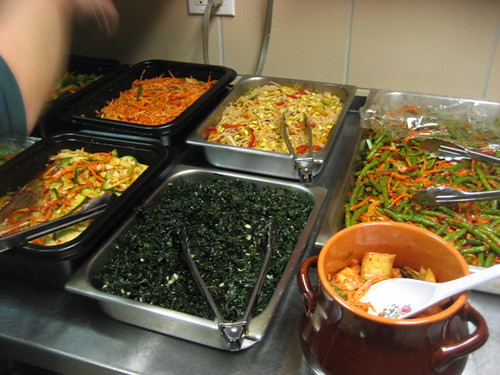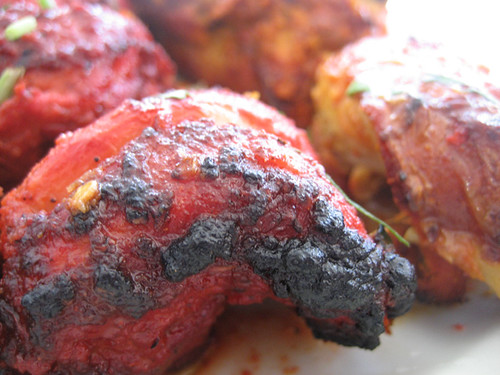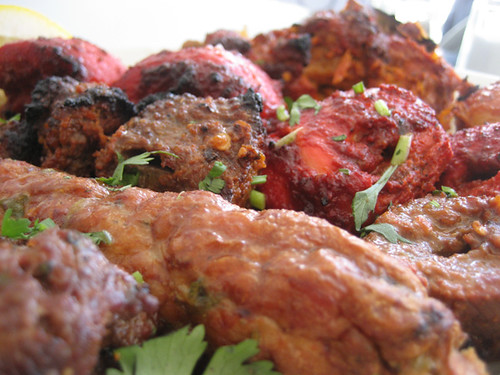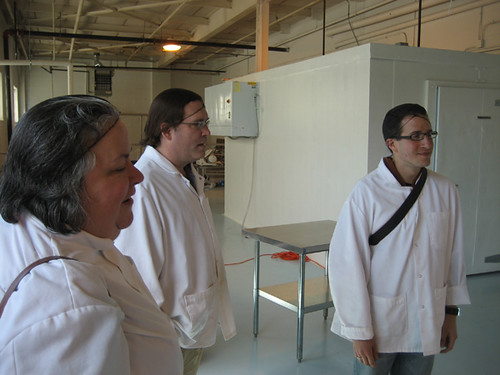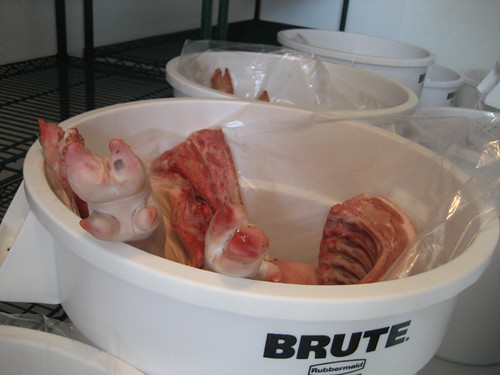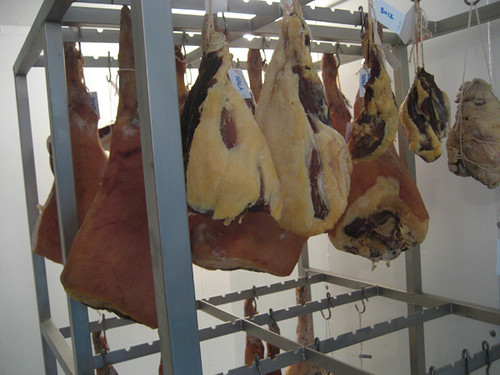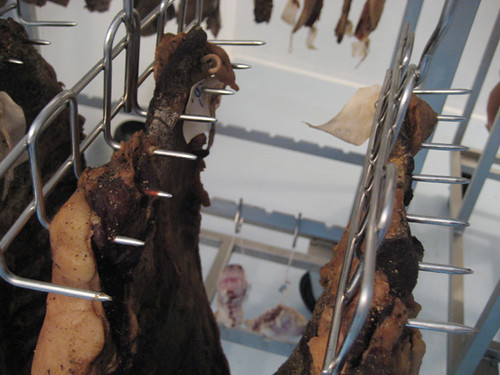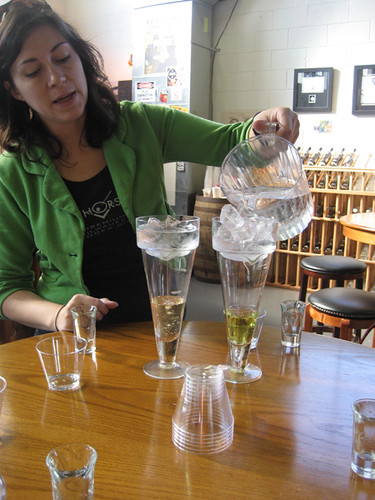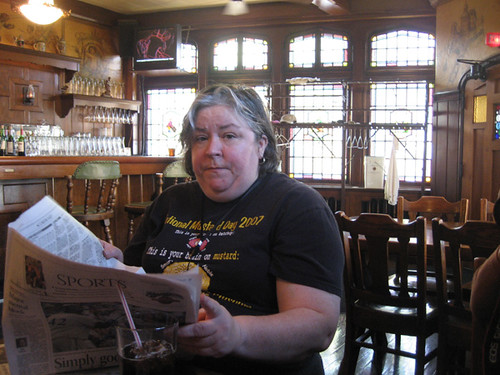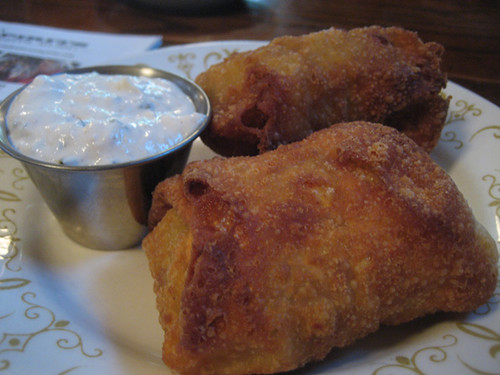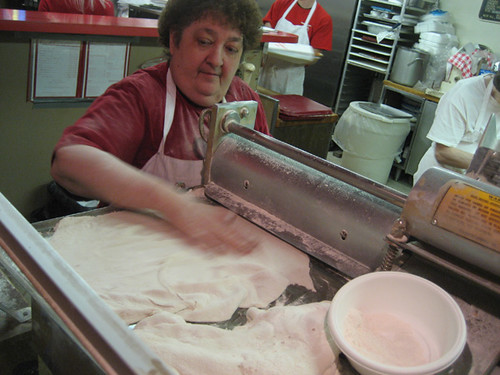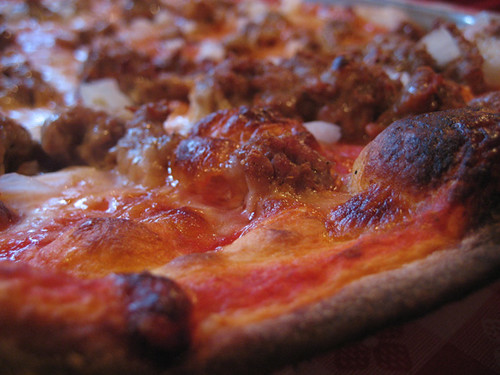First, some trivial news, then some deeper thinking.
When Howard Hawks set out to make his first western, Red River, he took his cast and crew to the location, and they rented a herd of cattle for the picture. A big herd, not some make 20 steers look like 200 herd, but thousands.
And then it rained. And rained, and rained. For five weeks straight. And by the first day they could finally shoot anything, they were over budget by millions. No wonder that the next time he made a western, Rio Bravo, he shot most of it on a soundstage.
Well, that’s not a perfect analogy for the delays before the next Sky Full of Bacon, but it will do. I shot the second of the two main interviews in early April, when the farm where I was shooting was still too cool to plant, and planned to come back at the beginning of May to get some more vibrant shots of planting in spring. Only, as you may have noticed, we had a seriously rainy May. And you need at least a couple of dry days before you can go out there and plant. And it took pretty much the whole month to get that. I was ready to shoot one day and then the farmer had a cold and had to cancel. And so the two month gap between episodes quickly stretched to three. I can only chuckle mordantly at the thought— hey, Mr. City Dilettante Videomaker, you wanted to find out what it’s like for farmers to have your whole work and life dependent on the weather? Well, this is what it’s like!
* * *
But it’s not wasted time— as I mentioned in passing, a redesign of this site is in the works, and will debut soon. Also, I’ve been lining up shoots for the summer, so I’ll have an interesting assortment of footage banked to keep the videos rolling out more regularly.
One guy I talked to, I honestly don’t know if it will ever happen or not. He’s a genuine prophet of a different kind of agriculture, there’s a page or two on him in The Omnivore’s Dilemma though he’s not otherwise media-overexposed, I didn’t think. What’s more, what he talks about is all through that book, and I’m betting he, with 30+ years experience living it, didn’t get it from Pollan.
So I sent him a packet, letter and a selection of the videos, and gave him a call. He started out by flatly saying no, too busy during the time frame, too many people who want to interview him and turn it into 90 vacuous seconds. I assured him what was different was, I try to go in depth for 20 minutes, not cut it down to soundbites.
Then it got interesting. He was more open to the idea at some future point, but at the same time, even 20 minutes is hardly anything, he’s working on a book and has been talking (to whom if anyone, I have no idea) about a Carl Sagan-like series on the subject, 10 hour-long episodes, that kind of thing. And then his point of view exploded in multiple dimensions and he went off on how organic farming for overpriced restaurants for foodies in big cities (in other words, exactly what most of my videos have been about) isn’t the solution, it’s a distraction from the real problem which is soil erosion, which is the result of 10,000 years of the wrong kind of farming and the scientific method which reduces nature to problems to be solved (that, by the way, is all over Pollan too) and it’s no good to tell people a little bit of it, they need to get the whole thing, because they need to see that we need to change everything from growing annuals to growing perennials, change the whole basis of agriculture or we’re doomed.
So this is one of those guys with a Big Idea. And guys with Big Ideas sometimes are cranks and sometimes change the world, and it’s not necessarily clear which is which at first. Or maybe it’s a distinction without a difference. And, well, I can see how people like him lose patience with the media turning their Big Idea into soundbites, even as there’s probably no way to win people over without first trivializing your Big Idea enough to get its foot in the door. A contradiction which, it was clear, he was acutely aware of and didn’t need me to drive home the irony of.
In the end he gave me a little room for hope. I could write up a proposal of what I was up to, and show how well I understood the topic, and he’d grade it and I had to get at least a B+ (yes, he really said that, with a chuckle— but not joking). And then maybe, at a less busy time of year, it could happen.
You know, I may do it. I don’t mind being put through hoops for this guy, because hey, how much would you go through to get a chance to hang for a day with Wendell Berry? Or Thomas Jefferson? Or John Brown? I have no problem swallowing my ego and doing some extra homework to make that happen and be in the presence of somebody who might just change the world. What does give me pause is… how far do I have to become an acolyte to win the chance? Do I have to become a convert— or, contemptibly, fake it— to convince him I’m worth his time? It’s a dicey thing for me because I do tend to make videos about subjects I’m highly sympathetic to, so the temptation to go from sympathetic observer to salesman is there. And as much as I think his research and work is important, I can’t say I really expect the whole world to switch to what he’s working on any time soon, on his terms precisely. I could see it making a big difference. But I don’t think he would see his work being 20% adopted, even, as being any better than ignoring it completely.
In the end I asked him, if he feels that he already gets all the mainstream publicity he can stomach, is there somebody else in the area who’s doing something that he thinks is worthwhile? The reply was withering— they’re all doing industrial monoculture agriculture, they’re all the problem. So apart from the people working at his place, he has no followers in his own country. A video could, one supposes, help with that, help interest others in his vision of farming. But for a prophet, accepting the diminution of your message even into 20 minutes may be too much of the world for you to bear— even to gain the world.


 Posted in
Posted in 



